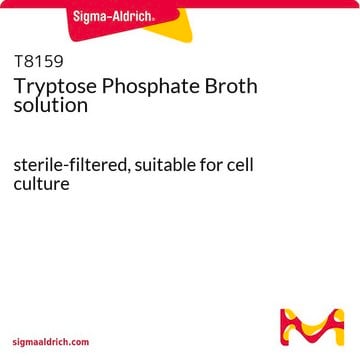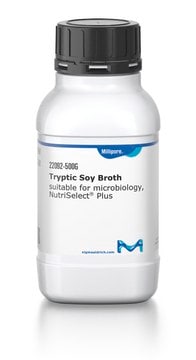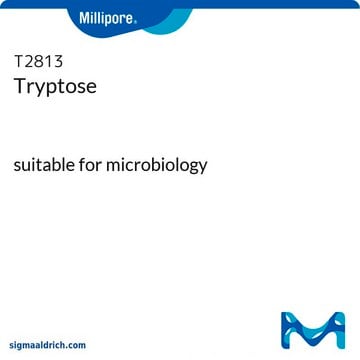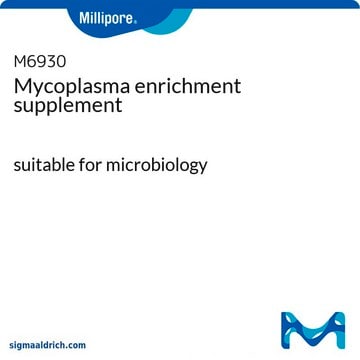T8782
Tryptose Phosphate Broth
buffered powder, Microbiologically tested.
Sinónimos:
Tryptose Broth
About This Item
Productos recomendados
form
buffered powder
quality
Microbiologically tested.
Categorías relacionadas
General description
Application
- of Leibovitz L-15 medium for the culture of BME26 tick embryo cell line
- of M199 medium for the preparation of chick embryo fibroblasts (CEFs)
- of Glasgow′s minimum essential medium (GMEM) for culturing baby hamster kidney (BHK-21) before transfection
Biochem/physiol Actions
Components
also commonly purchased with this product
comparable product
Storage Class
11 - Combustible Solids
wgk_germany
WGK 1
flash_point_f
Not applicable
flash_point_c
Not applicable
ppe
Eyeshields, Gloves, type N95 (US)
Certificados de análisis (COA)
Busque Certificados de análisis (COA) introduciendo el número de lote del producto. Los números de lote se encuentran en la etiqueta del producto después de las palabras «Lot» o «Batch»
¿Ya tiene este producto?
Encuentre la documentación para los productos que ha comprado recientemente en la Biblioteca de documentos.
Los clientes también vieron
Artículos
Detect mycoplasma contamination in cell culture through the PCR, DNA stain, or culture tests. Discover mycoplasma prevention, elimination, and detection kits.
Nuestro equipo de científicos tiene experiencia en todas las áreas de investigación: Ciencias de la vida, Ciencia de los materiales, Síntesis química, Cromatografía, Analítica y muchas otras.
Póngase en contacto con el Servicio técnico













